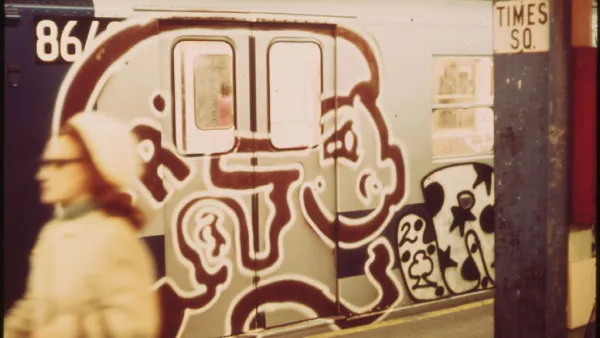Ever wonder why New York City drops an 11,875 pound ball on New Year's Eve? Onerous regulations, an indefatigable newspaper publisher, and New York's second tallest building fill Conor Friedersdorf's history of the Times Square ball drop.
The world is full of peculiar New Year's eve traditions - eating 12 grapes in Spain, serving suckling pig in Austria, burning effigies in Hungary - but why, since December 31, 1907, has New York City celebrated by dropping a giant ball from the top of a building in Times Square?
It began with New York Times publisher Alfred Ochs's decision to celebrate the opening of his newspaper's new headquarters (then the second tallest tower in the city) in previously named Longacre Square with a grandiose New Year's Eve celebration. "'An all-day street festival culminated in a fireworks display set off from the base of the tower,' according to an official history published by the Times Square District Management Association....An annual event was born -- but two years later, the city prohibited the fireworks display," notes Friedersdorf.
"'Ochs was undaunted,' the official history continues. 'He arranged to have a large, illuminated seven-hundred-pound iron and wood ball lowered from the tower flagpole precisely at midnight to signal the end of 1907 and the beginning of 1908.' Thus the origin of today's celebration."
"One Times Square has been home to a ball drop ever since, save in 1942 and 1943, when wartime light restrictions caused it to be canceled," adds Friedersdorf. "The ball itself has changed with technology. The original ball of iron and wood was replaced in 1920 with a 400 pound orb of all iron. In 1955, an aluminum replacement weighed in at a considerably lighter 150 pounds, and was adorned with 180 light bulbs....And in 2008, today's gaudy orb debuted in its permanent location atop One Times Square (the Times sold the building way back in 1961)."
FULL STORY: The History Behind Why NYC Drops an 11,875 Pound Ball on New Year's Eve

Analysis: Cybertruck Fatality Rate Far Exceeds That of Ford Pinto
The Tesla Cybertruck was recalled seven times last year.

National Parks Layoffs Will Cause Communities to Lose Billions
Thousands of essential park workers were laid off this week, just before the busy spring break season.

Retro-silient?: America’s First “Eco-burb,” The Woodlands Turns 50
A master-planned community north of Houston offers lessons on green infrastructure and resilient design, but falls short of its founder’s lofty affordability and walkability goals.

Test News Post 1
This is a summary

Analysis: Cybertruck Fatality Rate Far Exceeds That of Ford Pinto
The Tesla Cybertruck was recalled seven times last year.

Test News Headline 46
Test for the image on the front page.
Urban Design for Planners 1: Software Tools
This six-course series explores essential urban design concepts using open source software and equips planners with the tools they need to participate fully in the urban design process.
Planning for Universal Design
Learn the tools for implementing Universal Design in planning regulations.
EMC Planning Group, Inc.
Planetizen
Planetizen
Mpact (formerly Rail~Volution)
Great Falls Development Authority, Inc.
HUDs Office of Policy Development and Research
NYU Wagner Graduate School of Public Service



























